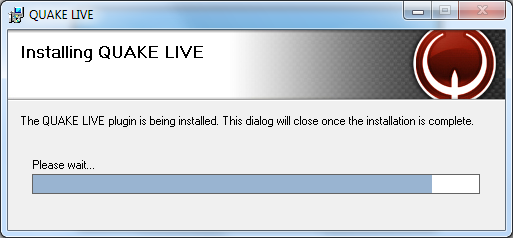
- #QUAKE PRO PLAYER SETTINGS SOFTWARE#
- #QUAKE PRO PLAYER SETTINGS PC#
- #QUAKE PRO PLAYER SETTINGS PLUS#
- #QUAKE PRO PLAYER SETTINGS PROFESSIONAL#
You want your mouseturns left/right to be as smooth (stutterless) as keyboard strafe left/right.

Your Windows desktop will move too fast, but you can configure mouse profiles to automatically raise DPI when your game launches (or steam.exe launches) and lower DPI when your game (or Steam.exe) exits. ULMB, ELMB, DyAc), is that without motion blur, mouse microstutters are much more visible.īlur-reduced modes look much better if you use a accurate ultra-high DPI (1600dpi+) and compensate by lowering in-game sensitivity. One interesting observation is that if you decide to use motion blur reduction by strobing (e.g.
#QUAKE PRO PLAYER SETTINGS PLUS#
I can take 1600/400 = 4.0, and then do 4.0*0.6 and I get, note that “edpi” is special case of “1 equivalent” ->, the reason why I like this is that most people have tried 400dpi, basically every non-gaming mouse is 400dpi, and so we can quickly figure out in our minds what means in real terms, and to people not familiar with “pro settings”, they don’t have to do any heavy lifting they just drop their mouse down to 400dpi and they can feel the sens.Įven better is cm/rev because it’s game agnostic, I can just do `2.54 × 360 / (sense × yaw × dpi)`, where yaw is 0.022 (for counter-strike), and I get 43.3cm/rev, plus this standard has been used since early quake pro days.

eDPIĮdpi is a strange use, it’s not actually an effective dpi, since in a game we are talking about measurements of angle, not inches on a mouse pad, the math is superficially easy, but it’s not intuitive, like if someone says they use “960” edpi, I can’t quickly see in my head what that means, I much prefer a term like “400 equivalent” or cm/revolution. These look like wildly different configurations, but in reality both players’ mice will be equally sensitive to movement. Player A can have his mouse set to 1600 DPI with an ingame sensitivity of 2, whilst player B can have her mouse set to 400 DPI with an ingame sensitivity of 8. Looking at DPI or ingame sensitivity on its own to compare is usually a bad idea. Different games also use different ways of measuring sensitivity, so ‘1’ sensitivity in game A won’t necessarily mean the same in game B.

Contrary to DPI this only applies in the game where you set it in, so it’s perfectly possible to have multiple different sensitivities across a variety of games installed on the same machine whilst using the same mouse. Sensitivity (or ‘sens’) is the ingame sensitivity setting. Most mice have a DPI button located below the scroll wheel, allowing you to cycle between different DPI settings. If you want a higher overall sensitivity you can always up your ingame sensitivity. Aside from that, some sensors will introduce smoothing at higher DPI levels, so it’s always safer to stay at 1600 or lower.
#QUAKE PRO PLAYER SETTINGS PROFESSIONAL#
It is a common marketing gimmick to advertise gaming mice with absurdly high DPI counts, but most professional gamers set their DPI anywhere between 4, making these absurdly high DPI possibilities virtually useless. So in general the DPI of your mouse will determine how sensitive it is throughout your entire system. If your mouse is set to 800 DPI it will travel 800 pixels (‘counts/dots’) on screen per inch of movement on your desk.ĭPI is always set on the mouse itself (or via software) and as such translates to the sensitivity of the mouse in Windows, internet browsers, and so on. The higher your DPI is the more your cursor moves when you move the mouse, so the higher the DPI, the more ‘sensitive’ the mouse, from a hardware point of view. If you’ve got your mouse set at 1000 DPI it means that the mouse will ‘measure’ 1000 points of movement per inch that you move the mouse.

#QUAKE PRO PLAYER SETTINGS PC#
Note: in PC gaming, CPI (Counts Per Inch) is used intermittently with DPI.ĭPI stands for Dots Per Inch.
#QUAKE PRO PLAYER SETTINGS SOFTWARE#
eDPI stands for ‘effective Dots Per Inch,’ which is a formula used to calculate the effective sensitivity of any given player, regardless of hardware or software settings. DPI stands for Dots Per Inch, which is a measurement of how many times your mouse reports its position to your PC.


 0 kommentar(er)
0 kommentar(er)
